The weather has turned much colder for many, and winter has finally made its presence known. So what better way to spend the time than with some great games? Whether you’re snowed in or just hanging out, there’s always time to pop in some Sega games and have fun!
Psychic World By Ken Horowitz
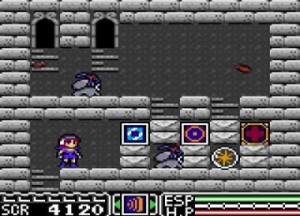 I recently managed to find a complete copy of this on eBay, and it’s really surprised me. I went in expecting a side-scrolling action game, but Psychic World plays a lot like Mega Man more than anything else. In fact, it’s almost like they wanted to make a Mega Man game for the Game Gear and just swapped out the main character. That’s not a bad idea, actually! For such an early title, Psychic World plays well, though the control is a bit slippery, and the levels are long and varied enough to keep things interesting.
I recently managed to find a complete copy of this on eBay, and it’s really surprised me. I went in expecting a side-scrolling action game, but Psychic World plays a lot like Mega Man more than anything else. In fact, it’s almost like they wanted to make a Mega Man game for the Game Gear and just swapped out the main character. That’s not a bad idea, actually! For such an early title, Psychic World plays well, though the control is a bit slippery, and the levels are long and varied enough to keep things interesting.
It’s always nice to discover new games, especially ones on hardware that you never got a chance to really play. Everything is new and interesting! Psychic World may not be on the same level as the Capcom classic from which it’s inspired, but there’s enough there to warrant a play. I’m glad to have added this one to my Game Gear library.
Now to see if I can find the Master System version, which I hear is actually better!
Ultima IV: Quest of the Avatar (Master System)
The Ultima series and I, we have a bit of a strange history. I grew up playing computer games, in a household with both a C64 and an Amiga homecomputer. When I got my Mega Drive, I started looking into gaming magazines, mostly those that covered both the home computers and the console platforms. And time and again, this name popped up: Ultima. My older cousin practically gushed over those games. Friends kept talking about them. Magazines wrote raving reviews time and again, whenever a new installment came out for any platform. And I? Well, I never really got into them. I tried my hands at Ultima Underworld when it was brand new, but my PC was too weak to properly run it. Once or twice, I tried playing Ultima VI, which many consider a legendary RPG; I quit within the first hour of gameplay. I just couldn’t handle the interface, and back when I first tried it – I was 12 – I apparently lacked the patience to allow myself to be immersed into the story when my first mouseclick didn’t cause something to explode – this was about the same time I discovered the Wing Commander games, and I loved those! Of course, being 12 and not a native speaker, I couldn’t grasp that faux medieval English these games tend to use at all. Later on, I also tried playing Ultima VII, which I gave up upon about just as quickly. And don’t get me started on that buggy, broken mess that was Ultima IX! It wasn’t until much later – after I turned 18 – that Fallout 2 won me over and I grew to like RPGs.
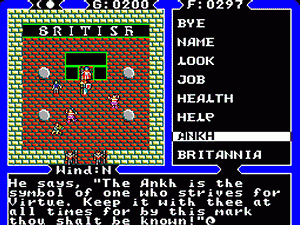 A while ago – shortly after I finally decided to add a 32X to my collection – I stumbled upon a Power Base Converter at a retro flea market. It was a bargain, so I snapped it up – but now I faced the problem of havin no games for it. I further parsed the sale, looking for a decent foundation to start my Master System collection. I didn’t have much more money on me (I had gone there without expecting to buy anything), so I just grabbed whatever seemingly interesting game I could afford: loose copies of Castle of Illusion and Asterix, as well as boxed copies of Sonic 2 and the Card-based Spy vs. Spy. And at another table, this game presented itself to me. Up to that point, I had not known that Ultima had ever been ported to a Sega console. Flipping the box over, I was also kinda surprised to see a 1990 copyright mark. Granted, by 1990 the Master System was still relatively strong, but it nevertheless struck me as rather late. But it came cheap, and the name does have quite a bit of pedigree behind it, so I decided to get it on a whim. I went home, plugged the Power Base Converter into my Mega Drive, and, for a test run, I randomly picked out Ultima IV, just to see what it looked like. I switched the power on, sneered a bit at the title screen which looked rather simplistic, and pressed start…
A while ago – shortly after I finally decided to add a 32X to my collection – I stumbled upon a Power Base Converter at a retro flea market. It was a bargain, so I snapped it up – but now I faced the problem of havin no games for it. I further parsed the sale, looking for a decent foundation to start my Master System collection. I didn’t have much more money on me (I had gone there without expecting to buy anything), so I just grabbed whatever seemingly interesting game I could afford: loose copies of Castle of Illusion and Asterix, as well as boxed copies of Sonic 2 and the Card-based Spy vs. Spy. And at another table, this game presented itself to me. Up to that point, I had not known that Ultima had ever been ported to a Sega console. Flipping the box over, I was also kinda surprised to see a 1990 copyright mark. Granted, by 1990 the Master System was still relatively strong, but it nevertheless struck me as rather late. But it came cheap, and the name does have quite a bit of pedigree behind it, so I decided to get it on a whim. I went home, plugged the Power Base Converter into my Mega Drive, and, for a test run, I randomly picked out Ultima IV, just to see what it looked like. I switched the power on, sneered a bit at the title screen which looked rather simplistic, and pressed start…
… four to five hours later, my then-fiancee (and now-wife) found me still sitting on the living room floor, cross-referencing hastily scribbled hints and clues I put down in a notebook I had grabbed out of my desk. I had never found the patience to get into the newer 16-bit era Ultimas before, and the older 8-bit series entries had kept me away due to their archaic presentation. But for some reason, the Master System version of Ultima IV had instantly won me over. I don’t know… maybe it was the fact that I could actually talk with NPCs about different things instead of having them repeat one sentence over and over. Maybe it was the fact that all these small hints and clues you find are interwoven into one giant tapestry that makes out one seemingly simple but overall huge, all-encompassing quest. Maybe it was because even through it’s simplicity, I somehow found the controls and the mechanics immediately engaging – something that had eluded be every time I tried to play an Ultima game before. Whatever the reason, now the series got me hooked. Even though I still haven’t played through any other Ultima game aside from IV – but at least I own a physical copy of all of them (yes, even IX, though that’s only because my wife brought it into the household when she moved in with me). And when the announcement came that Sega-16 was going to include reviews for Master System games into its library, I leaped at the chance, popped in the game once more, and prepared for another playthrough of Ultima IV (so yeah, prepare for seeing me review this game on this site pretty soon).
The only negative aspect? Weeks later, I found out the reason why my copy was comparatively cheap: turns out it is missing the two booklets – A History of Britannia and The Book of Mystic Wisdom – that originally came with the game. It’s still beatable in that state, and I was able to find PDF versions of these booklets online. Still, I can’t help but feeling that the seller back then ripped me off. But, on the other hand – if it had been more expensive… maybe I would never have grabbed the chance and played it…
Golden Axe by Joseph C.
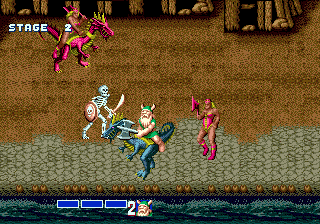 This month was the first time in a while that I’ve had a chance to get out my Mega Drive and play something. I had a night thoroughly free of commitments and a recently acquired collectible – The Sega Classics Arcade Collection for Mega CD. I only found out this collection existed this month and I was able to get the version without Super Monaco GP which sadly, is the only game in the collection I haven’t played. I settled instead on Golden Axe which is the only title that has the CD audio capabilities of the system fully utilised.
This month was the first time in a while that I’ve had a chance to get out my Mega Drive and play something. I had a night thoroughly free of commitments and a recently acquired collectible – The Sega Classics Arcade Collection for Mega CD. I only found out this collection existed this month and I was able to get the version without Super Monaco GP which sadly, is the only game in the collection I haven’t played. I settled instead on Golden Axe which is the only title that has the CD audio capabilities of the system fully utilised.
If Golden Axe isn’t my favourite Mega Drive game, it is certainly the most nostalgic for me. It is one of the earliest titles I can remember playing in the arcade and also one of the first games I got for the Mega Drive. It is probably the countless times I’ve played through it with family and friends that has made it so nostalgic. It doesn’t take long to get through but every one of my runs seems to have been unique in one way or another. Whether it is experiencing a new glitch or just finding some new way to torment the blue thieves.
This playthrough was solo and despite not having played the game for years, I had not forgotten what to expect. I did find it less responsive and somewhat jerkier than I remember, but this may have been down to the version I was using. I did make it all the way to the end and managed to bring down Death Bringer on the last bar of my last life of my last continue. The final score was the best C grade I’ve had since university.
The day I’m sick of Golden Axe is the day I’m sick of gaming.
Rocket Knight Adventures By The Coop
Walmart. Love it or hate it, it’s the store that has no qualms about cutting a game’s price hard so it’ll be gone from store shelves. They’ve done it with PC games, PS2 games, Saturn games, 32X games, and yes, Genesis games. In fact, finding Genesis games brand new for $5 wasn’t unheard of back in the day. And it was during one of those deep slashing of prices events that I just happened to stumble across a game that I’d heard little about at the time.
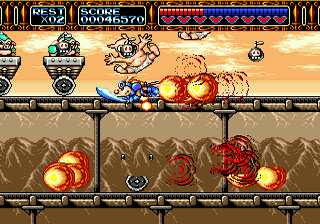 Well, that’s not entirely true. I did see the glowing review of Rocket Knight Adventures in the August 1993 issue of GameFan, but the game just never showed up anywhere where I could get it, when I could afford it. Then one day when I went into Walmart, I saw it in this little glass-door cabinet near the cash register, as well as the $5 sticker that was on the game case’s spine. Needless to say, I left with the game that afternoon, along with another game that I’ll save for another entry.
Well, that’s not entirely true. I did see the glowing review of Rocket Knight Adventures in the August 1993 issue of GameFan, but the game just never showed up anywhere where I could get it, when I could afford it. Then one day when I went into Walmart, I saw it in this little glass-door cabinet near the cash register, as well as the $5 sticker that was on the game case’s spine. Needless to say, I left with the game that afternoon, along with another game that I’ll save for another entry.
I got home with my games, and fired RKA up. Greeted with a cool little title screen and intro, I was then flung into the first level. Loads of color, very nice music, layer upon layer of smooth parallax scrolling… it introduced itself with quite a bit of visual and aural flair. Then came the fun gameplay mechanic with your character’s tail sliding ability, the sword charging ability, the touches of humor in how enemies were defeated, and the first boss fight. By the time I got to the ridiculous number of parallax layers and the water dragon at the beginning of stage two, the game had me hooked. It was fun, it looked and sounded great, and it played just as well. Factor in the slight changes to the ending depending on the difficulty level you chose, and it was a game that was worth all five-hundred and thirty pennies that it cost me.
Having the day I bought Rocket Knight Adventures behind me by many years now, I see it as one of those games you come back to from time to time, to see just what could be done by skilled programmers and designers who had a strange idea, and ran with it. When the gray and brown realities of today’s games, needs to be shoved aside by the saturated colors and over-the-top concepts of days gone by. I mean come on… you’re a jet pack-wearing possum who’s fighting a pig army to rescue the king’s daughter. If that doesn’t push the Call of Duties and Battlefields out of the way, what will? This was a crazy game idea, grounded in solid gameplay, visuals and sound, that then had the flash and effects added on top; substance, with style sprinkled on it. That’s not to say that style over substance can’t have its merits, but there’s nothing quite like having both things there in equal parts. And RKA accomplished that quite nicely.
Cliffhanger By David Dyne
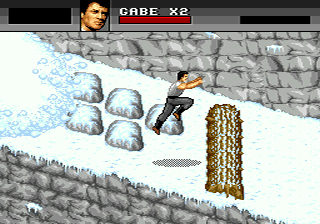 You have to be suspicious of games that give you cheat codes for multiple lives. You’re either in for a fun, uphill battle as in Contra for the NES, or you’re in for a boatload of frustration and poor game design as in Cliffhanger. Even though I never could get the 99 lives code to work, my Game Genie saved the day with an unlimited lives code instead. Given Cliffhanger’s instant death moments during the avalanche and the flight from the killer bats sequences, I’m not sure 99 lives would have been enough anyway. To be fair, once you’ve learned the patterns these sequences are not that difficult to navigate and you’ll be charging ahead until the next annoying sequence such as the final boss battle with the helicopter. What else is there to say about Cliffhanger? It’s a mediocre beat-’em-up/platformer and not altogether great game. However, I find it strangely compelling which is why I played through it for this month’s Reader Roundtable. Next month I’ll pick something better I promise!
You have to be suspicious of games that give you cheat codes for multiple lives. You’re either in for a fun, uphill battle as in Contra for the NES, or you’re in for a boatload of frustration and poor game design as in Cliffhanger. Even though I never could get the 99 lives code to work, my Game Genie saved the day with an unlimited lives code instead. Given Cliffhanger’s instant death moments during the avalanche and the flight from the killer bats sequences, I’m not sure 99 lives would have been enough anyway. To be fair, once you’ve learned the patterns these sequences are not that difficult to navigate and you’ll be charging ahead until the next annoying sequence such as the final boss battle with the helicopter. What else is there to say about Cliffhanger? It’s a mediocre beat-’em-up/platformer and not altogether great game. However, I find it strangely compelling which is why I played through it for this month’s Reader Roundtable. Next month I’ll pick something better I promise!
Tiny Toons Adventures: Buster’s Hidden Treasure By Tom Briggs
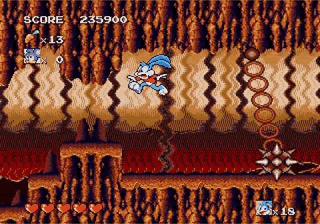 I’ve recently made a return to classic gaming, as a way to unwind on my days off, and this month I wanted to immerse myself in a game that I hadn’t experienced in the ’90s. The game I settled upon? Tiny Toon Adventures: Buster’s Hidden Treasure. I had heard great things about this platformer in the past, and I’m a BIG fan of what Konami did on the Genesis. So it seemed like a perfect match! And for the most part, it lived up to my expectations.
I’ve recently made a return to classic gaming, as a way to unwind on my days off, and this month I wanted to immerse myself in a game that I hadn’t experienced in the ’90s. The game I settled upon? Tiny Toon Adventures: Buster’s Hidden Treasure. I had heard great things about this platformer in the past, and I’m a BIG fan of what Konami did on the Genesis. So it seemed like a perfect match! And for the most part, it lived up to my expectations.
Buster’s Hidden Treasure is the quintessential platform game. The levels start off very straight forward but soon become complex, jumps progress from easy to very challenging, and you have your forest, ice, and lava levels. It’s all very by the book platforming. But what makes the game stand out is the Tiny Toon license. Playing as Buster and calling on the help of various friends, as well as defeating brainwashed allies in the form of boss battles, adds some great personality to a game that could have just as easily been an original Konami IP.
Of course, all the personality in the world wouldn’t matter if this game didn’t control well. Much has been said about Buster’s jumping mechanics. The height of your jump is dictated by how long you press the jump button. This certainly isn’t new, but it does feel as if Buster is sucked straight back to the ground immediately after letting go of the button. It’s almost like a rubber band effect. This becomes particularly important to adjust to when dispatching enemies. Let go of the jump button too early, and you’ll land short of your enemy, receiving damage. Is it annoying to have to adapt to the jumping? Sure. But it’s worth it to explore everything else the game has to offer. And everything else is a fun, bright, and challenging delight.

Pingback: Sega-16 Articles | The Essential Malady
Rocket KNight… One of my all time fvorites… what amazing graphics for the Sega Genesis.. : )